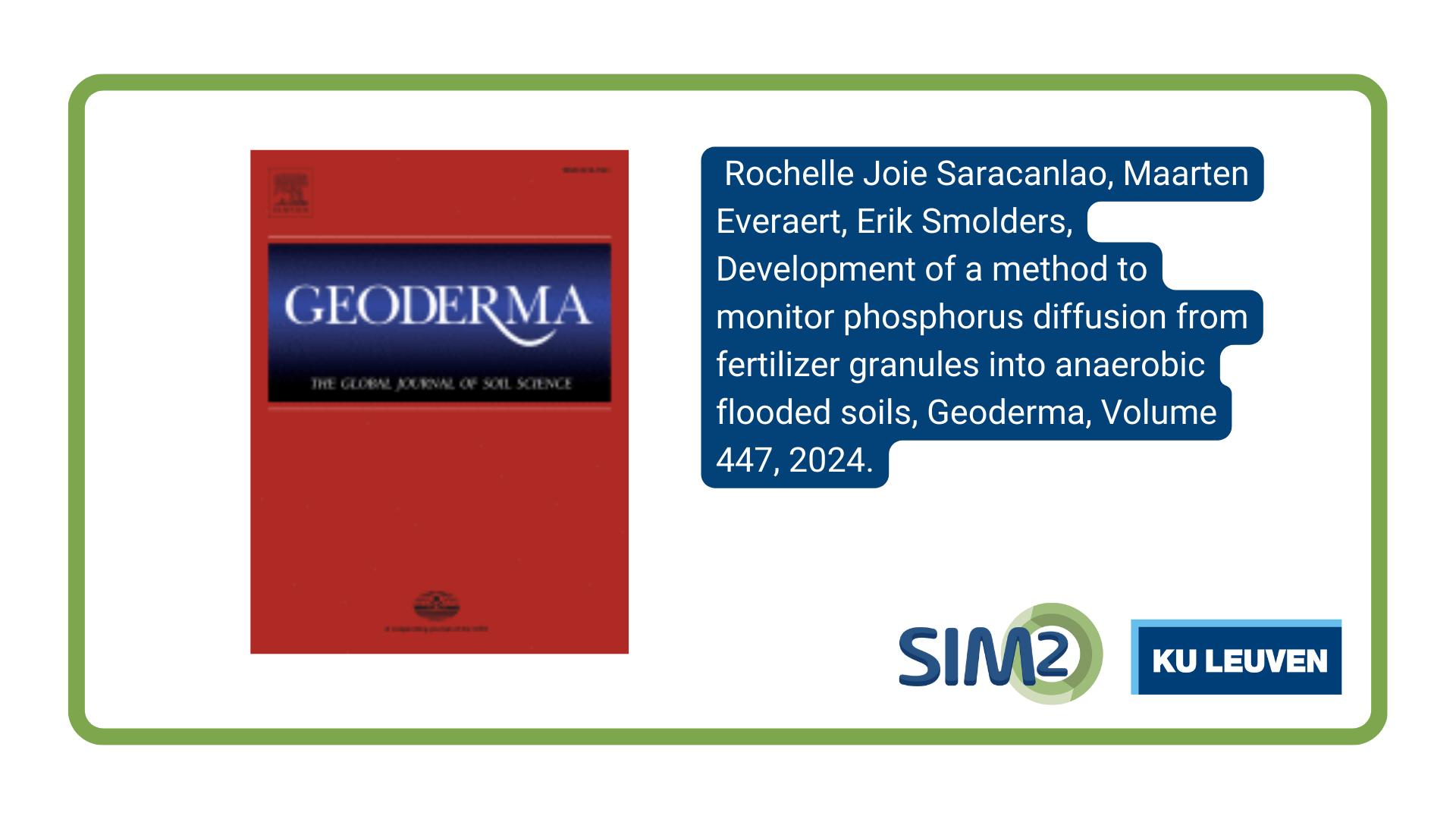Rochelle Joie Saracanlao, Maarten Everaert, and Erik Smolders of the Division of Soil and Water Management, Department of Earth and Environmental Sciences, KU Leuven, have published a new article on the development of a method to monitor phosphorus diffusion from fertilizer granules into anaerobic flooded soils. The article is published in the journal Geoderma, July 2024.
Studying the fate of phosphorus (P) around the soil-fertilizer interface is crucial for developing efficient fertilizers. Here, a method is developed to map P dissolution from granules into flooded soil with due attention to avoid oxidation artifacts during monitoring. The method of diffusive gradient in thin films (DGT) technique was used in soil incubated under flooded conditions; the P concentration in the DGT was visualized with colorimetry. The diffusion zone around the granule was monitored by repeatedly deploying DGTs with precipitated Zr oxide-based binding gels on the soil surface for 24 h in an anaerobic chamber. The soil surface was opened at various periods after flooding (1–42 days) and after removing the water and a 1 cm upper soil layer, thereby leaving a soil layer with a fixed depth above the embedded fertilizer. The method was developed after testing the effects of DGT deployment time, the placement of DGT (below or above the granule), the fertilizer granule depth (1 cm or 0.4 cm) below the soil surface where the gel was deployed, and the mass of fertilizer granule. The final method was tested in three different P-deficient soils (acid, neutral, calcareous) incubated with granular soluble P fertilizer (triple superphosphate, TSP) under flooded conditions. In the highly P-sorbing acid soil, no diffusion zones were observed. In the other two soils with a lower P sorption capacity, the P diffusion zones in the gels were immediately observed after 1 d of incubation, highlighting the influence of soil properties on the fate of fertilizer P under flooded conditions. The technique developed here allows for a simple, non-destructive assessment of P behavior under flooded conditions and, hence, can be a valuable tool for improving P fertilizer formulations adapted to flooded soils and providing insights into the potential availability of fertilizer-P for plant uptake.
Reference
Rochelle Joie Saracanlao, Maarten Everaert, Erik Smolders, Development of a method to monitor phosphorus diffusion from fertilizer granules into anaerobic flooded soils, Geoderma, Volume 447, 2024, 116926, ISSN 0016-7061, https://doi.org/10.1016/j.geoderma.2024.116926.
Acknowledgement
This research was financially supported by the European Union's Horizon 2020 Research & Innovation Program under the Marie Skłodowska Curie Grant Agreement No. 813438. The authors also thank Antonio Delgado and Patrick Rocamora who oversaw the sampling and shipping of soils from Spain and the Philippines, respectively. Maxim Cuvelier is also kindly thanked for designing the DGT device used in this study.





